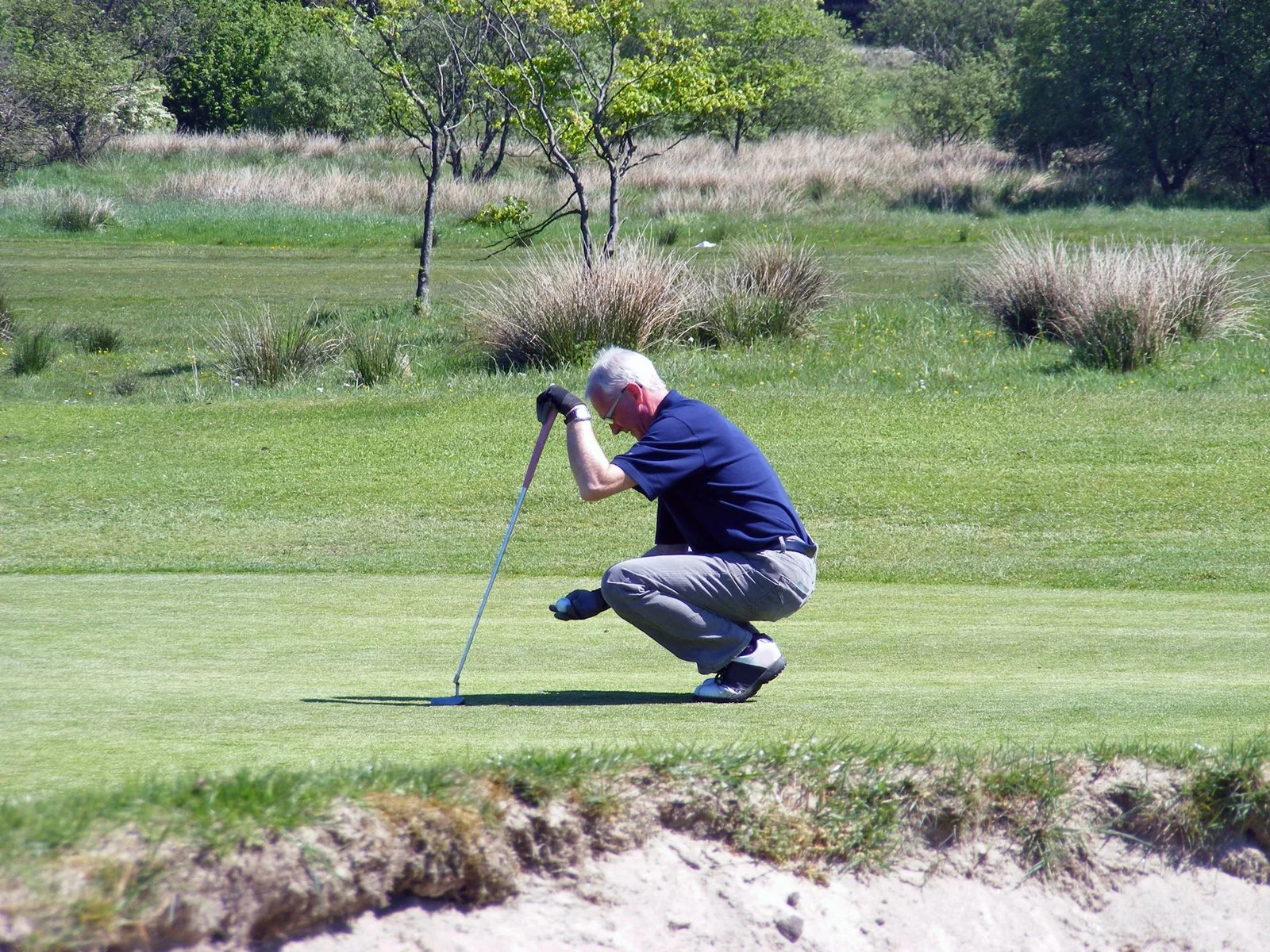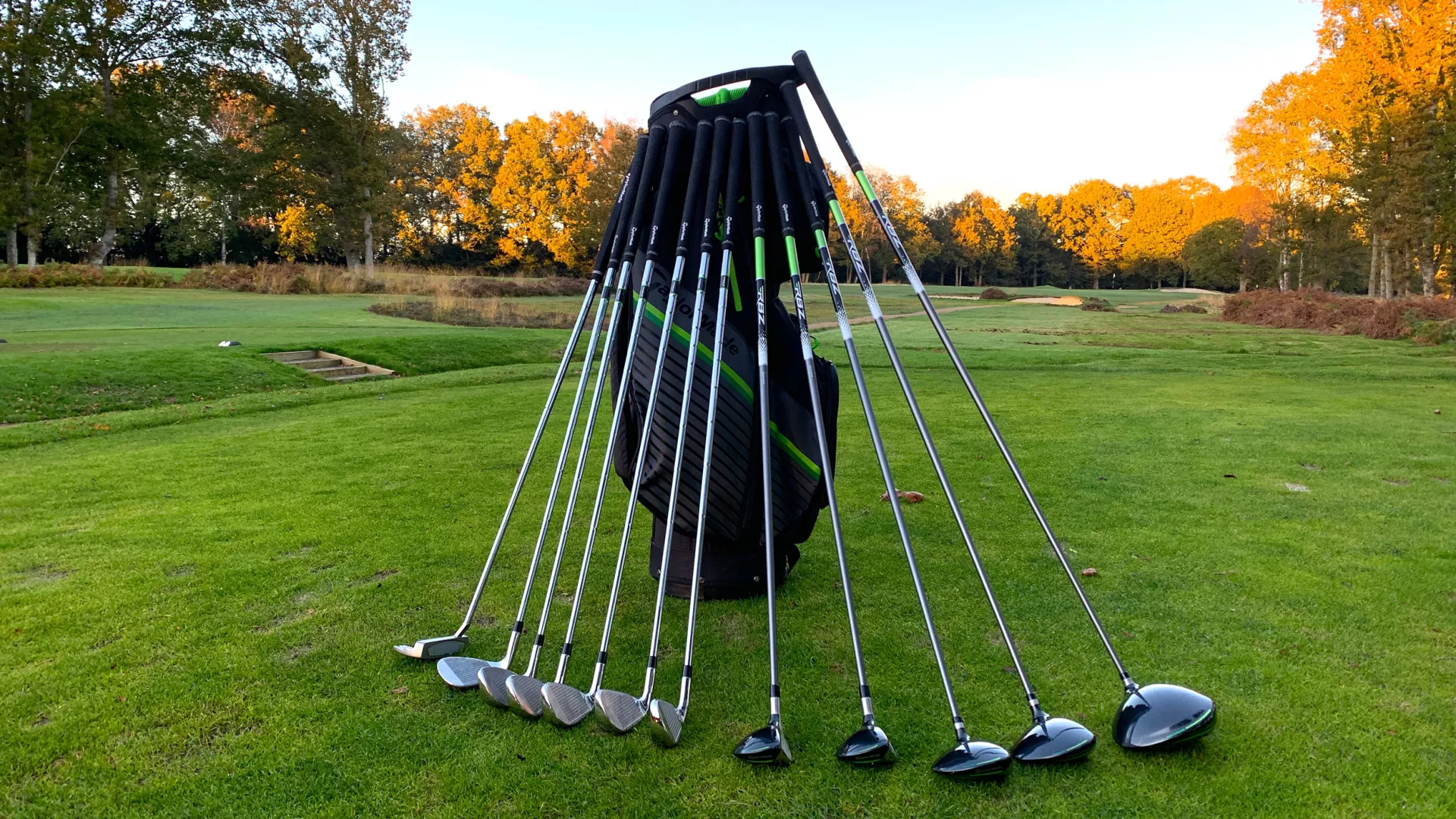Do You Know the Names of Old Golf Clubs? Mashies and Niblicks, Baffies and Spoons — Sorting Them All Out. By Brent Kelley

Back in the early days of golf history, and even into the 20th century, golf clubs in a set were not identified by number (e.g., 5-iron), but by name. There were clubs called mashies and niblicks (and mashie-niblicks); cleeks and jiggers; baffies and spoons, among others.
Today, we call such clubs “antique golf clubs” or “historical golf clubs,” or obsolete or archaic clubs. Perhaps the better name, though, would be “pre-modern clubs.”
You can think of modern golf club sets as those containing (mostly) clubs identified by number rather than name, and with steel (and later graphite) shafts rather than wood (most commonly hickory) shafts.
Okay Before you go any further check out these Moden Clubs.
Callaway Cleveland Cobra Mizuno Taylormade Tour Edge Wilson
The transition to such modern sets was completed in the late 1930s, early 1940s.
In the earliest days of golf, and up into the mid-1800s, there was very little uniformity from one clubmaker’s clubs to another’s, and sometimes little conformity even within different sets made by the same clubmaker. Not much was standardized, from set to set, about those old golf clubs.
Over time, however, such uniformity and conformity did begin to emerge.
By the turn of the 20th century, the old names of golf clubs did imply certain common characteristics. One clubmaker’s mashie, in other words, was roughly the same as another’s (but not necessarily identical in playing characteristics) by the early 1900s, and companies began making sets with the following names and relationships.
The Old Names of (Old) Golf Clubs
So let’s run down the names of the most commonly used historical golf clubs. We’ll also put them into some context – how they related to one another within a set of clubs – by relating their usage to the ways golfers use modern equivalents. In other words, which of the antique clubs would have been used the way a current golfer uses, say, a 9-iron?
These equivalencies are based on information from the British Golf Museum. (Clubs are listed as if we are working our way through the bag, from longest club to putter.) Some alternate names (or names of clubs with very similar functions) are also listed next to the primary name.
- Play Club (grass club, long club): The historical equivalent of the driver. Golfers used the “play club” to “play away” from the teeing ground.
- Brassie: The closest equivalent in use to modern 2- or 3-woods. It had that name because of a brass plate on the sole.
- Wooden Cleek: Used in the manner of a modern 4-wood.
- Spoon: Used as one would use a modern 5-wood. When spoons first appeared (going back to the 18th century, perhaps earlier), some had concave faces. Shaped like a spoon, in other words, giving them their name.
- Baffie (baffing spoon): Equivalent to a higher-lofted wood (such as a 7-wood) or even a hybrid. In fact, some modern golf manufacturers have used the “baffie” name on hybrid clubs. It’s sometimes spelled “baffy.”
The preceding clubs all had wood clubheads; the following antique clubs had iron clubheads.
- Cleek (driving iron): With blade-like iron heads, it is most closely associated to modern 1-irons and 2-irons in use. Could also be used for putting, but see the last club listed below.
- Mid Iron: Equivalent in use to a modern 2-iron.
- Mid Mashie: Used in a manner of a modern 3-iron, and occupying that space in the golfer’s bag. One of the several lower-lofted irons.
- Mashie Iron: Used like a 4-iron.
- Mashie: One of the better-known of the old golf club names, the mashie most closely resembled today’s 5-iron in its function.
- Spade Mashie: Equivalent in use to a 6-iron.
- Mashie Niblick: Had the role of the 7-iron among antique golf clubs.
- Pitching Niblick (lofting iron): Comparable to an 8-iron in use.
- Niblick: Along with the mashie (and mashie-niblick), the best-known among the old clubs because of its distinctive name. It was a higher-lofted iron such as a modern 9-iron. Some golf manufacturers still break out the “niblick” name for wedges and chippers, when they want to try to capitalize on club nostalgia.
- Jigger: You can think of the jigger as an old name for what today we call a chipper. The jigger typically had a short shaft but not a lot of loft, and golfers used it for chip shots and other short shots around the green that did not require high loft.
- Putting Cleek: Used for — you guessed it — putting. It had a narrow, flat or very low-lofted club face, shaped more like a long iron blade than like modern putter faces.
Some of the Replacements of Antique Clubs are Themselves Now Obsolete
Golf clubs keep developing. Hybrids, for example, are (comparatively) recent developments in the history of golf equipment.
So some of the modern, numbered golf clubs that replaced the named, antique clubs are, themselves, now obsolete, or at least headed that way.
The 1-iron is virtually gone from golf, and 2-woods are rare. The 2-iron is sometimes used by the best golfers, but almost never seen in the bags of recreational golfers (nor offered for sale by that many golf manufacturers anymore).


